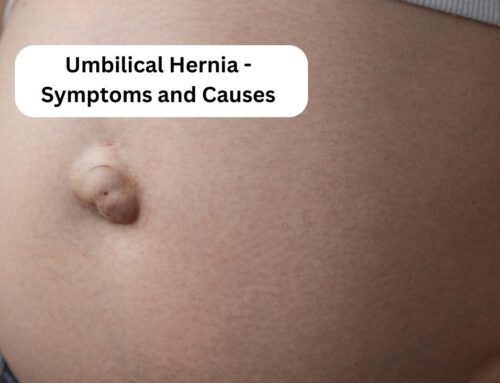Hernias can be a painful and alarming condition. Two of the more serious complications that can arise with hernias are incarcerated and strangulated hernias. In this blog post, we will go through the symptoms, causes, and key differences between these two conditions to help you better understand and identify them.
Understanding Hernias:
Before we differentiate between incarcerated and strangulated hernias, let’s briefly define what a hernia is. A hernia occurs when an organ or fatty tissue pushes through a weak spot or opening in the surrounding muscle or connective tissue, creating a noticeable lump or bulge. Common types of hernias include inguinal (groin), umbilical (belly button), and hiatal (upper stomach) hernias.
Incarcerated Hernia
An incarcerated hernia is a type of hernia in which the protruding organ or tissue becomes trapped within the abdominal wall. This can lead to symptoms such as:
- A visible bulge or lump at the hernia site.
- Discomfort or mild pain.
- Difficulty pushing the bulge back in or reducing it.
- Nausea and vomiting in some cases.
Causes of an incarcerated hernia include:
- Chronic coughing.
- Heavy lifting.
- Obesity.
- Pregnancy.
Strangulated Hernia
It’s essential to seek medical attention promptly if you suspect you have an incarcerated hernia. Delayed treatment can lead to complications.
A strangulated hernia is a more serious condition in which the blood supply to the trapped organ or tissue is compromised. Symptoms of a strangulated hernia include:
- Severe pain at the hernia site.
- Nausea, vomiting, and abdominal distension.
- High fever.
- The skin over the hernia may become red and tender.
Causes of a strangulated hernia can be similar to those of an incarcerated hernia, but the critical difference is the compromised blood flow. A strangulated hernia is a medical emergency, and immediate surgical intervention is necessary to prevent tissue death.
Incarcerated vs. Strangulated Hernia- Key Differences
| Aspect | Incarcerated Hernia | Strangulated Hernia |
|---|---|---|
| Definition | A hernia in which protruding tissue is trapped but not compromised. | A hernia where the blood supply to the herniated tissue is compromised. |
| Symptoms |
|
|
| Causes | Increased pressure (e.g., heavy lifting, straining during bowel movements) can cause a hernia to become incarcerated. The protruding tissue gets stuck in the hernia sac. | A strangulated hernia occurs when the blood supply to the protruding tissue is cut off. |
| Blood Supply | The blood supply to the herniated tissue is generally intact in incarcerated hernias. | The blood supply to the herniated tissue is compromised in strangulated hernias. |
| Severity | Less severe but still requires medical attention. Surgery may be needed to repair the hernia. | A medical emergency that demands immediate surgery to prevent tissue damage and infection. |
| Complications | Left untreated, an incarcerated hernia can develop into a strangulated hernia. | Tissue death (gangrene) can occur if a strangulated hernia is not treated promptly. |
| Treatment | Typically involves manual reduction to push the protruding tissue back into its normal position, or surgery if necessary. | Emergency surgery is required to remove the compromised tissue and repair the hernia. |
| Prognosis | Generally favorable if treated promptly. | Prognosis depends on the extent of tissue damage but can be serious if not treated promptly. |



